City centers turn night into day to promote nightlife. The excess illumination is as damaging to health as polluted air and water. Hong Kong’s downtown brightness is more than twice that of New York or London. ‘Dark Sky’ zones are vital to cut waste and reduce community health risks. Li Bingcun reports from Shenzhen.
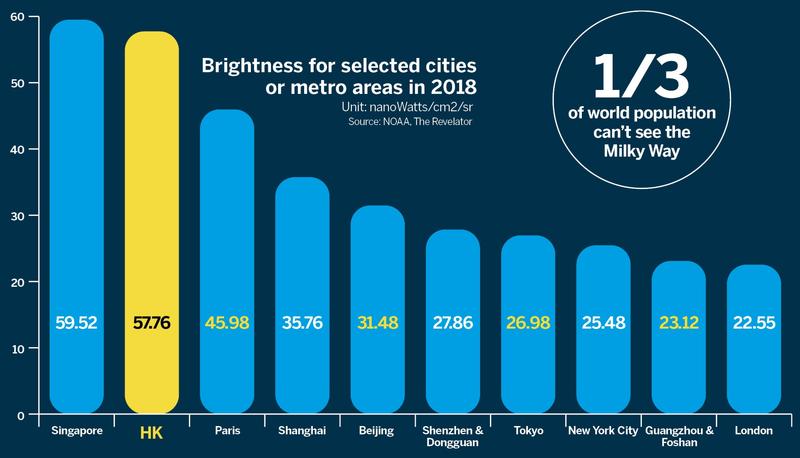
Light pollution may cause cancer, boost virus contagion, weaken human immunity, and fatally disorient birds, bats, and other wildlife.
Like polluted air and water, excessive artificial light is bad for the planet and all who live on it. Daylight and darkness are an eternal rhythm balancing life. We upset that to our detriment.
Hong Kong leads global cities with severe light pollution. A 2018 survey showed that in 10 selected big cities and areas of high light intensity around the world, Hong Kong’s downtown illumination ranked second after Singapore’s. The city’s brightness exceeded Paris’, Shanghai’s and Beijing’s, and is over twice that of New York or London. The city registers about 300 resident complaints of “violent” outdoor lighting annually.
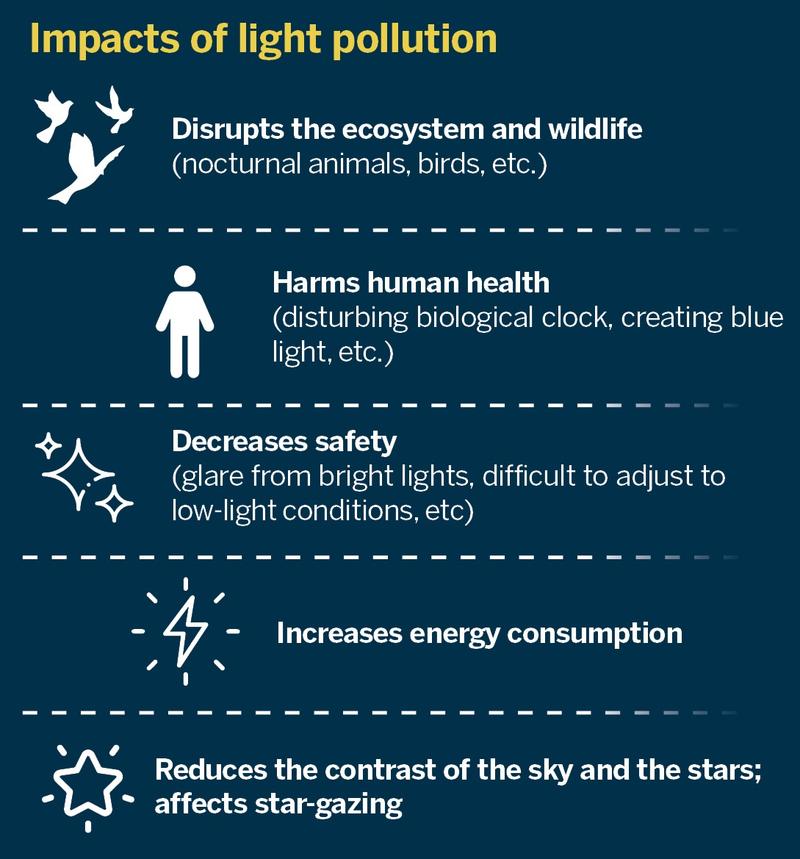
Health risks to all
Researchers say night lighting disrupts the human circadian rhythm and increases the risks of developing immune system depression, obesity, sleep disorders, and diabetes. Such disruption may also render humans more vulnerable to breast, colorectal, and prostate cancers.
The World Health Organization found that night workers exposed to artificial light have a higher probability of developing breast and prostate cancer. The WHO’s International Agency for Research on Cancer categorizes such exposure to artificial light as “probably carcinogenic”, its second highest alert level for carcinogens.
Scientists estimate the world’s average illumination increased 270 percent, and 400 percent in some regions, during the 25 years between 1992 and 2017. Over 80 percent of the global population is subjected to nighttime light pollution, which also raises the likelihood of infectious diseases spreading.
Research in 2019 into the West Nile virus by the University of South Florida, showed exposure to artificial light increases the infection period for wild birds, increasing the potential for West Nile virus outbreaks by 41 percent.
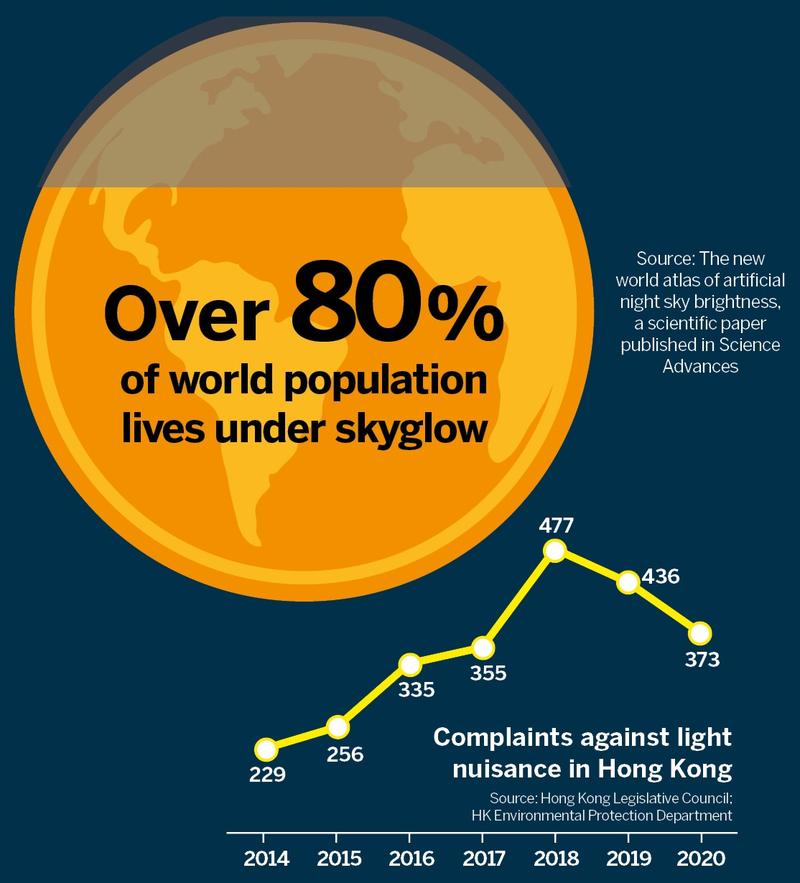
A 2021 study of Italy’s COVID-19 cases also found a positive correlation with outdoor light pollution. The researchers believe light pollution may depress the human immune system to accelerate virus infection.
Although LED lights are more energy-efficient, the blue light wavelengths such street lighting emits are five times more disruptive to people’s sleep cycle than conventional bulbs. The ecological disorientation causes needless deaths of migratory birds and baby sea turtles annually.
The International Dark-Sky Association (IDA) calculates excess outdoor lighting caused global annual energy waste equivalent to the output of 2.6 million tons of coal and 13.6 million barrels of oil. It estimates there is 30 percent of outdoor lighting waste in the United States alone, costing up to $3.3 billion, emitting 21 million tons of carbon dioxide per year. To offset the recurrent CO2 emissions, 875 million trees would need to be planted annually.
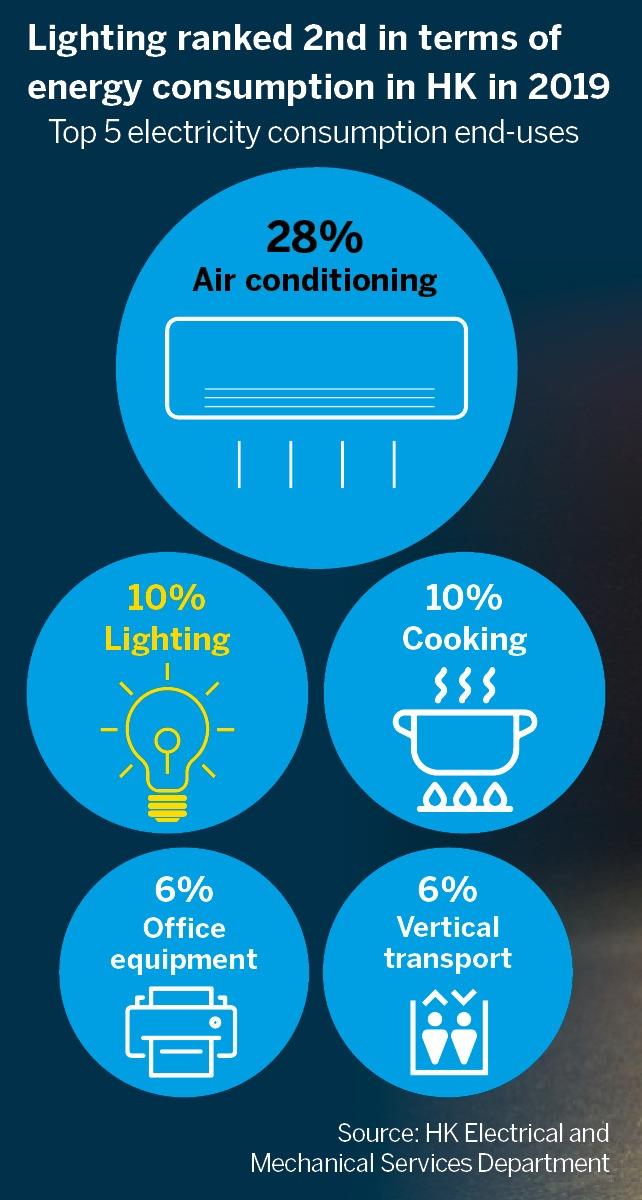
Dark Sky leaders
Taiwan, Japan and South Korea set up Asia’s only three Dark Sky parks with recognition from the IDA. The IDA has certified 195 Dark Sky conservation spots around the globe. Chinese mainland cities Nanjing, Chengdu, Hangzhou, Shenzhen and Beijing, also announced plans to establish Dark Sky zones.
Such zones are typically located in ecologically sensitive areas with reduced outdoor lighting density, low brightness, and time-controlled illumination. Public education activities will raise awareness of light pollution, health hazards, and wildlife protection.
Shenzhen’s Dark Sky project is in the Xichong area of the Dapeng Peninsula, a scenic spot with beautiful beaches and clear sky. The designated 25 square kilometers accommodates 2,000 residents and 300 shops. At least 30 percent of the lighting facilities will be upgraded this year. The project will apply for IDA certification by June, 2022.
The Dark Sky trend follows sustainable development, for energy conservation and carbon emissions reduction, said Mei Lin, head of Shenzhen Observatory’s astronomy department. The lessons learned can be applied to central urban areas with excessive light pollution.
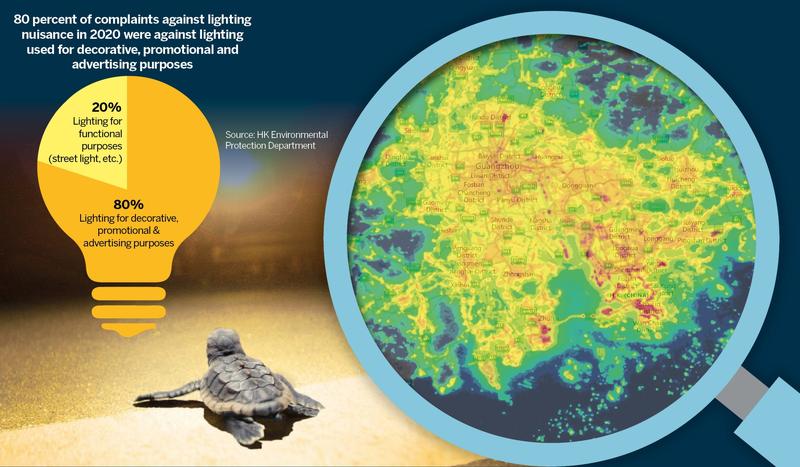
Mei noted that none of the world’s major city clusters, like the Tokyo Bay Area or the San Francisco Bay Area, have adopted Dark Sky planning. The Guangdong-Hong Kong-Macao Greater Bay Area could potentially be the first cluster to plan and implement comprehensive Dark Sky zoning.
Liang Zheng, director of the Shenzhen branch research center for urban lighting planning at the China Academy of Urban Planning and Design, said that the past decade saw cities install light shows and giant outdoor LED screens. These can be curbed to better serve sustainable, green development.
Stargazing eco-tourism also has the potential to develop alongside Dark Sky parks, Liang said. In Chile and the US, economic benefits to the local communities have been generated without ecological harm.
Taiwan set up Asia’s third Dark Sky Park at the Hehuan Mountain in 2019. The illumination of the park was reduced and the spot has become an eco-tourism landmark. It also propelled other places to develop stargazing tourism, according to Liu Chih-an, president of the Taipei Amateur Astronomers Association, one of the project’s initiators. Last December, Taiwan’s Lienchiang county passed the island’s first legislation on light pollution control.
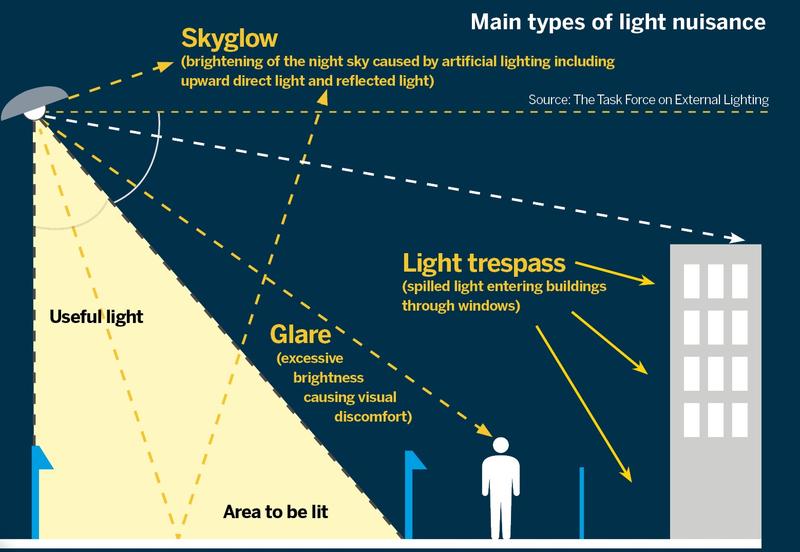
Lighting review
Jason Pun Chun-shing, principal lecturer at the University of Hong Kong’s Department of Physics, urged a review of the city’s excessive light pollution. Pun, who monitored Hong Kong’s night brightness for over a decade, said the artificial lights along Victoria Harbor are as powerful as moonlight, leaving no “complete dark place” for astronomic observation or stargazing.
Despite the excessive brightness and increasing complaints, Pun said there has been hardly any research into the impact of Hong Kong’s light pollution. Ongoing overseas studies confirm light pollution’s adverse effects on human health and the ecosystem. He is concerned about Hong Kong’s situation.
Pun recalled that the Dark Sky conservation concept emerged in Hong Kong a decade ago — an Astropark was opened at Sai Kung in 2010. But the scale and function fell far short of expectations, and it was not developed further.
The Environment Bureau launched the Charter on External Lighting in 2016 as the most promising voluntary agreement in recent years, encouraging downtown business owners to switch off unnecessary lighting at night. It was signed by 5000 business owners.
Pun observed that the protection zone initiatives adopted by nearby cities are more proactive. The pandemic dimmed Hong Kong’s lighting to some degree. He hopes the positive experience of less light pollution can prompt the restart of Dark Sky conservation.
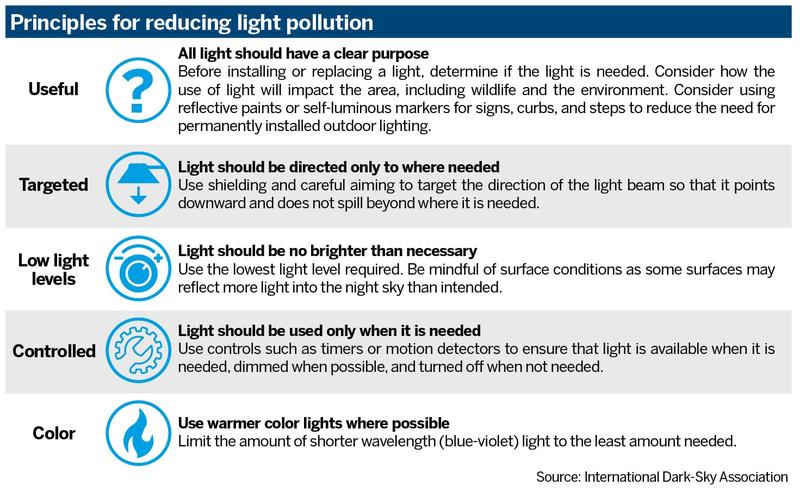
Lack of legislation
Despite the expected benefits, Dark Sky conservation zone projects face many challenges and limitations. Liu noted that such projects often involve a long gestation period, continuous financial support, and considerable coordination with vested interests.
Under IDA certification, a Dark Sky zone needs to continuously audit its lighting usage over 10 consecutive years.
So far, most regions have no specific legislation on light pollution control, creating difficulties in formulating regulations and penalties for non-compliance.
Taiwan’s Hehuan Park has no legally binding convention. It exhorts residents and visitors to exercise due care on light control in the area.
Exodus Sit Chun-long, an international committee member of the International Dark-Sky Association, cautioned that there can be a conflict between boosting tourism and protecting the ecology. The Dark Sky zone’s impact on city light pollution is also limited, as most such pollution is in downtown areas, and calls to reduce it are zealously obstructed by business owners.
Sit advised regions seeking IDA certification to have clear objectives and to coordinate with other stakeholders in environmental protection, astronomic observation, eco-tourism, public health, etc., for a comprehensive Dark Sky purpose, consensus, and agenda.
Much-needed standards
Pun stressed the importance of setting integrated criteria on light pollution grading. He noted that so far there are only brightness metrics but no multi-factor and unified classification, integrating the degree of pollution, health, and other impacts. That handicaps policy formulation.
Noting the challenge of creating nationwide laws on the issue, Liang encourages cities to leverage local government legislation to regulate light pollution. He encouraged planners to include nightscape lighting within the overall design of buildings, and tailor different urban area lighting needs for flexible control specifications.
Liu urges raising public awareness on the issue to be prioritized. Light pollution, compared with air or water pollution, is a relatively new alarm which the public is not yet sensitized to. “If the faucet is not turned off, we know that we are wasting water. If the light is unnecessarily scattered to the sky or elsewhere, few people realize that is also a kind of waste.”
Outdoor lighting is a symbol of progress and prosperity, to showcase. Yet, in the more enlightened consciousness of sustainable development, dimming lights appropriately is in our collective interest, said Liu.
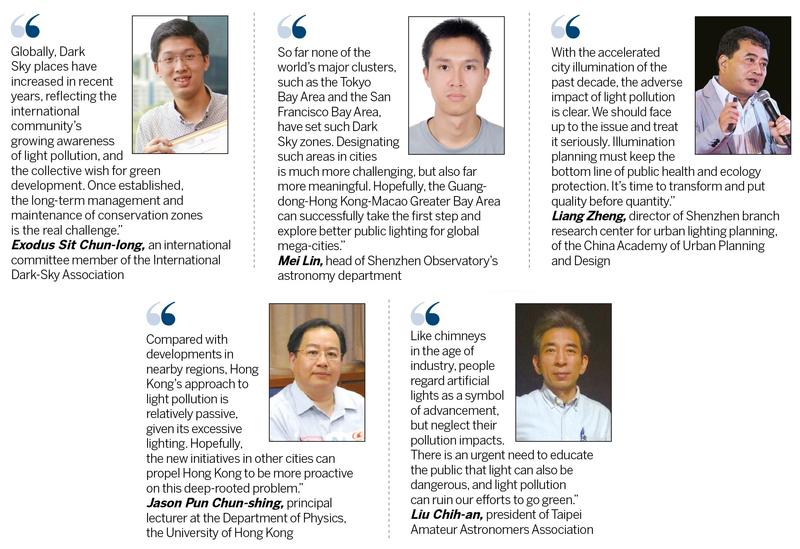
WHAT’S NEXT
• Formulate authoritative, unified standards for light pollution.
• Fund more research into light pollution's effects on human health.
• Set more pilot zones to enforce laws on light pollution.
• Include outdoor lighting in the overall design plans of cities.
• Strengthen public education on light pollution and ecological impacts.
Contact the writer at bingcun@chinadailyhk.com


